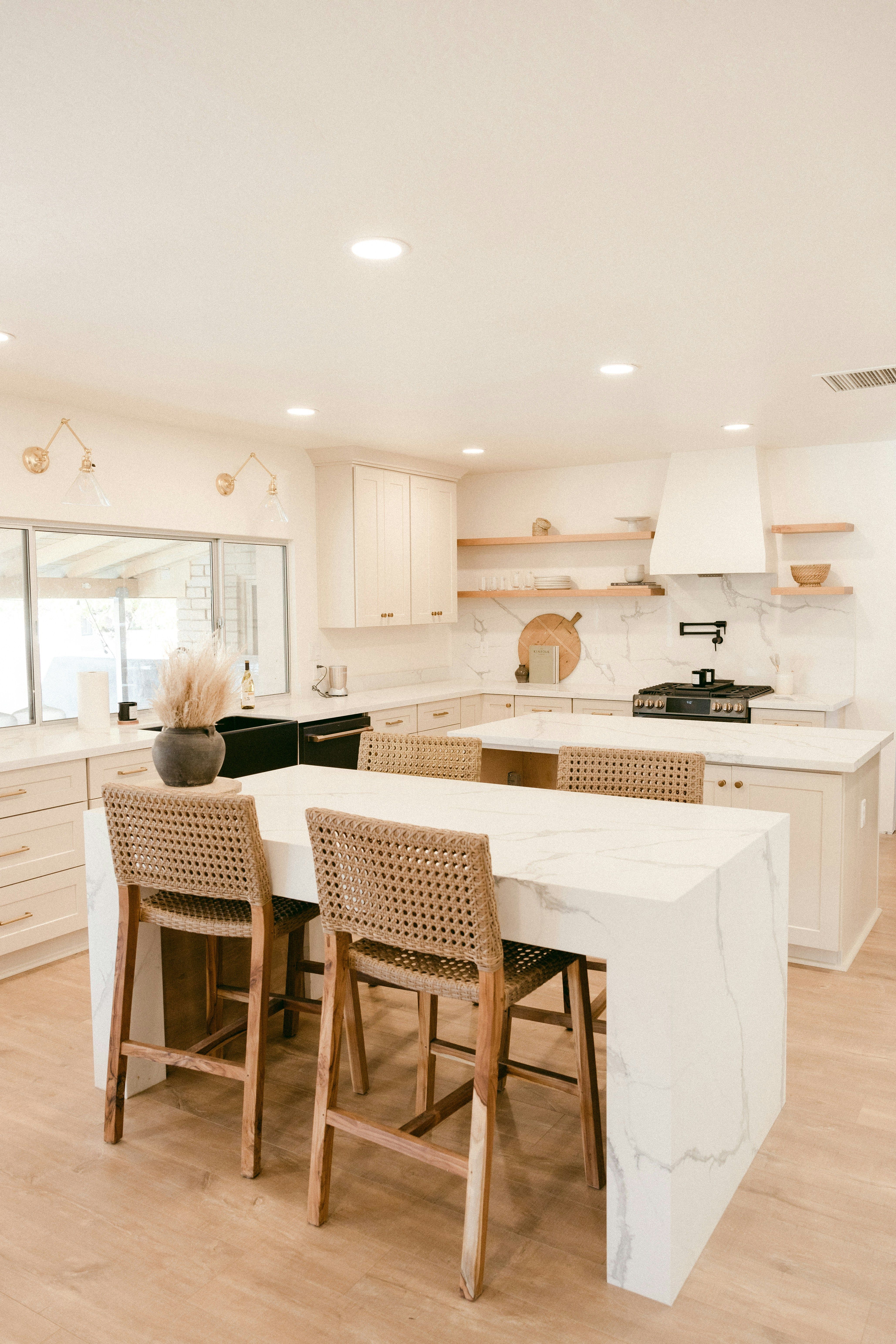
Should A Kitchen Island Be The Same Height As The Worktops?
May 27, 2025Same Height: Why It Works for Many Homes
Keeping your island and your worktops at the same level might feel like a no-brainer, especially if you want your kitchen to look polished and easy to use. This approach keeps things visually clean and simplifies the layout.
Here's why it’s a go-to for a lot of homeowners:
A Cleaner, Simpler Look
When all the surfaces line up, your kitchen just looks more pulled together. The lines are clean, and your eye can move smoothly across the space without being interrupted by sudden changes in height. This matters even more in open-plan homes where the kitchen blends into the dining or living area. A consistent height helps the kitchen feel like part of the whole, rather than a separate, choppy space.
Better Workflow for Cooking
If you spend time prepping meals, you'll appreciate having a single level to work with. Chopping, mixing, rolling dough - it's just easier when you’re not adjusting for different surface heights. Everything stays on the same plane, which helps prevent spills, clutter, and awkward movements.
Great for Smaller Kitchens
In tight quarters, visual simplicity goes a long way. A single-level island helps the room feel more open and less crowded. You also get more usable space - a flat island can serve as prep area, casual dining table, and even a work-from-home desk when needed.
When a Different Height Might Be Better
That said, uniform height isn't always the answer. There are plenty of situations where changing up the level of your island can improve both the look and the function of your kitchen. Let’s break them down:
Breaking Up the Space
Especially in larger kitchens or open-concept homes, a two-tier island can help create visual zones. The cooking area can remain practical and flat, while a raised section gives guests a place to sit and chat - or even eat - without being in the middle of meal prep chaos.
Accessibility and Comfort
Not everyone in the house uses the kitchen in the same way. Kids might want a lower surface to help bake cookies.
Someone using a wheelchair may need a section that’s more reachable. And if you’ve ever cooked for hours at a time, you know how much a more ergonomic setup matters. Having two levels can actually make the kitchen more inclusive and comfortable.
A Style Statement
Want your kitchen to feel custom-built? Playing with height can help. A raised bar or lowered baking station adds dimension and depth, and it's an easy way to express your personal style without making loud design choices. You can even mix materials - think warm wood for the bar area, cool quartz for the prep zone - to create contrast and interest.
Things to Consider Before Deciding
So how do you choose? Start with your day-to-day habits. Are you mostly prepping food or are you using your island for dining and socializing? Do you have young kids, older family members, or accessibility needs? Here are a few tips to guide your choice: Check your kitchen's footprint. In small kitchens, keeping everything at one height helps it feel more open. But in a large, airy room, mixing heights can add much-needed structure.
Think about what you need. A single surface is ideal for cooking, while a split-level island might work better for eating or hosting guests. Plan for appliances. If your island includes a sink or cooktop, make sure the height works with how you’ll use it. And don’t forget lighting - a raised section might need extra fixtures or different placement. You can always fake the look. Not ready for a full remodel? Products like adhesive wraps or countertop films can visually break up a space or give the illusion of different surfaces - without touching the structure itself. For a range of finishes that mimic natural stone without the mess of renovation, check out these beautiful stones vinyl.
Same Height
Clean, cohesive design
Easier for meal prep
Ideal for small kitchens
Can look flat in large kitchens
Different Heights
Great for multitasking and hosting
Helps divide open-concept layouts
Allows better accessibility
May disrupt visual flow
Final Takeaway There’s no one-size-fits-all answer here. The best island height is the one that fits your life. If your kitchen is the hub of your home - where meals, memories, and morning coffee all happen - make sure it’s working for you, not just looking pretty in photos. Want a cleaner look and simple functionality? Go with the same height. Need a space that does a bit more, for more people? Consider mixing levels. You don’t have to choose form or function - you can have both, especially if you plan it thoughtfully. And remember, your kitchen should fit you - not the other way around. If you need help when it comes to decorating, check out our blog for ideas.